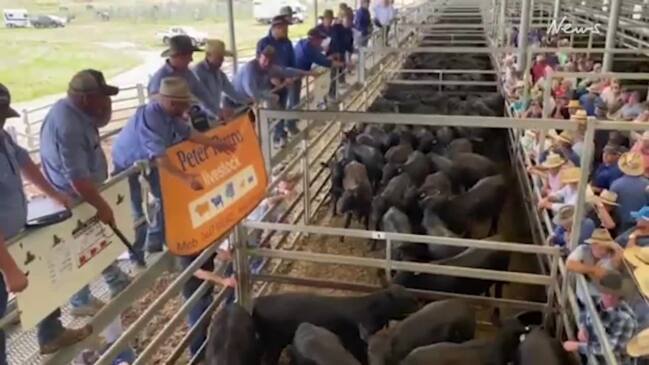Lamb producers caught out with forward contracts
The relationship between buyers and sellers of livestock can often be fraught, and the recent tension is just one repercussion of the volatile livestock markets.

Like most significant events there has been good and bad repercussions from the widespread rain.
The good has been splashed all over the media in the form of rising prices for cattle, lamb and sheep.
An unwelcome consequence has been the decimation of dry standing feed after a surprise dumping of millimetres of rain in an El Nino, and rapid sprouting of summer weeds which has left many farmers with hefty bills for chemicals and spraying.
Another repercussion which some say is simmering again is the often fraught relationship between processors and farmers.
“Lets just say these past few weeks, and even going back months, hasn’t been great for maintaining or building alliances and relationships,” a livestock buyer told The Weekly Times.
The comment was made when discussing the lamb market. The heavy lamb price has gone from struggling to hold a base of 500c/kg in November to 785c/kg carcass weight in the first week of trading this New Year.

It’s a staggering turnaround, some buyers suggesting it’s the biggest change in market performance they have ever witnessed over a short period. Great for those holding lambs to come into the auction system but a frustration or ‘sore point’ for those farmers who locked lambs into forward contracts at 540c/kg to 600c/kg.
Phones have reportedly been ringing hot to major exporters like JBS and Thomas Foods International, among others, who legitimately signed-up tens of thousands of lambs on forward deals that looked solid enough at the time when the industry was anticipating a hot dry summer.
Forward contracts are a risk management tool for both the buyer and seller and both parties willingly take a position to give them some guarantees in the form of supply and price. In the past there has been clear winners and losers in forward contracts and this year the unexpected soaking rain has put the outcome in favour of processors.
For cattle the extreme price lows in the spring for slaughter cattle, against solid export demand for beef, left many farmers with a bad taste.
They are just some examples of the psychological impact these past six months have had on the livestock sector as markets prove unpredictable with big price swings, which has arguably weakened trust and buyer/seller relationships.
The hangover from the difficult conditions of last year was still on display last week with pregnancy-tested-in-calf heifers not selling as well as anticipated at Mortlake and Wodonga. Some vendors and agents pointed to the low incomes for cattle last year still affecting breeding demand.
And an analysis of slaughter figures collected by the National Livestock Reporting Service confirms there was a lot of animals processed at low price points last year.
The figures were:
CATTLE: 5,752,687 head processed, up 24 per cent on 2022 levels and the highest production in three years. And the biggest supply month for cattle was September, which is when prices bottomed out.
LAMBS: 20,661,026 slaughtered, 8 per cent higher than 2022 and 28 per cent higher than the five year average. And, again, the busiest month was September when prices hit lows.
The figures show the impact of numbers and supply, and buyers raised this point in the conversation about current lamb prices. Last week prices surged as floods and wet weather disrupted supply, and this week as the severe conditions eased the market came back $20 to $30.
Their argument was that it was only supply which had changed, and demand dynamics for lamb were unchanged. They said the market had been able to gain some traction on the cheaper price point for lamb, such as the major supermarkets lowering the price for lamb legs to $8/kg which made it more affordable than chicken for consumers.
Talking of repercussions, they suggested if lamb prices remained elevated the rise in consumption could lose momentum. Bottom line they said export and domestic demand doesn’t support rates of 750c/kg-plus and it was only disrupted supply which had driven the market to this point.
Already there was feedback from buyers at Bendigo on Monday of a shift to mutton due to the high price of light MK lambs which had slowed down the bag lamb trade – a classic case of for every action there is a reaction.




